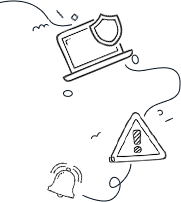Introduction
Automation is rapidly transforming workplaces across all different industries—kind of like that time you accidentally hit “reply all” on an office email. From simple software tools to high-tech robotics that make you wonder if you’ll soon be having coffee with your robot overlord, many workplaces have implemented automated systems as essential parts of their daily routines.
So, what does automation look like in the workplace? Is it the robot making coffee in the break room while asking you about your weekend? Not quite. Let’s explore how to work effectively alongside automation while keeping cybersecurity in check (after all, you want your robot assistant to focus on coffee, not on stealing your lunch recipe).
What Does Automation Look Like in the Workplace?
Automation can take many forms, each designed to cut through the chaos like a hot knife through butter—if the butter were made of inefficiency. From software that tackles repetitive tasks like data entry and invoice processing to customer service bots that can outlast a human in a game of 20 Questions, these technologies are here to help. Think of them as your super-efficient coworkers who never take a coffee break!
Ever met a chatbot that appears when you visit a website, eager to assist? Yep, that’s automation in action! And let’s be honest—who doesn’t prefer chatting with a friendly bot than trying to find customer service? These tools let AI tackle simple queries, freeing you up for more important tasks, like reorganizing your desk for the fourth time.
Other nifty technologies can sift through heaps of data to provide insights, predict trends, and smoothen workflows. Imagine a management tool that optimizes your schedules and daily duties—like a personal assistant without the need for lunch breaks or performance reviews. Sounds dreamy, right?
Why Do Workplaces Implement Automated Systems?
Automation can raise profit margins by 5-10%. But let’s face it—most reasons for integrating these systems aren’t solely about the dollars and cents. They can free up employees to do more strategic and creative work (or, as we like to call it, serious daydreaming).
By automating repetitive tasks, staff can focus on high-value projects. The machines take care of the mundane, speeding up production and reducing human error—because let’s be honest, no one wants a coffee spill on important documents!
AI and machine learning excel at spotting threats faster than traditional methods by analyzing patterns in real-time. The sooner you detect a threat, the quicker you can react—because nobody wants to be that person who doesn’t see the cyberbanana peel in the way. Having continuous monitoring technologies means you’re always one step ahead in the security game. Who knew having a tech-savvy shield could feel this good?
While automation has its perks, it doesn’t come without its share of cybersecurity headaches.
Cyber-Threats to Automated Systems
Automation often involves interconnected systems, which can be more tempting to hackers than a donut cart in the break room. As automation spreads like rumors in an office, the number of possible entry points for cyberattackers rises. So, while your robot may save you time, it could also catch a virus (and not the flu kind).
It’s essential to weigh the ethical implications of AI, including privacy issues and the risks of using biased algorithms. You might even undergo some training to tackle these risks head-on—kind of like a superhero, but with fewer capes and more cybersecurity protocols.
As automation increases, so do the demands for stringent cybersecurity measures. That means you may need to learn about and apply new security technologies and protocols—because you don’t want to be the one who forgot to change the default password (seriously, nobody wants to be that person).
Conclusion
Automation is revolutionizing workplaces with increased efficiency and productivity—like the world’s most organized office party. Yet, with great power comes great responsibility (thanks, Spiderman). New cybersecurity threats require careful management. By understanding automation’s risks and rewards, businesses can use these technologies effectively while keeping sharp security measures intact. You’ll soon find yourself training with these new systems that are more reliable than an office microwave—yes, we know that’s a lofty comparison!
How do you feel about automation creeping into your workspace? The more you understand these systems, the better you can collaborate to protect the sensitive data you handle daily—like trying to keep your personal pizza order from getting leaked!
The post Why You Should Embrace Automation in the Workplace appeared first on .




